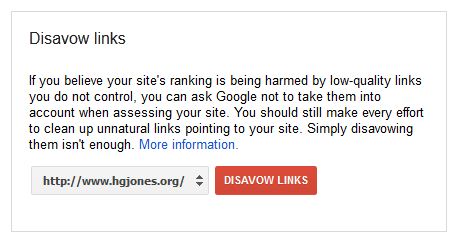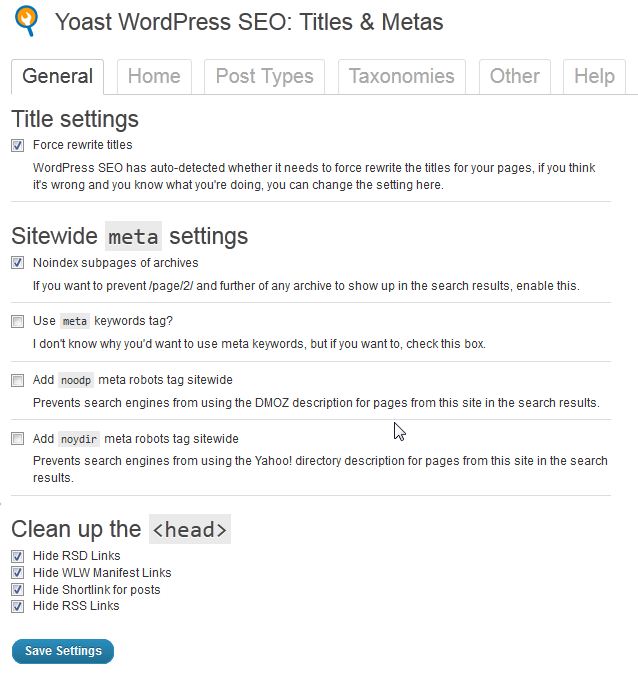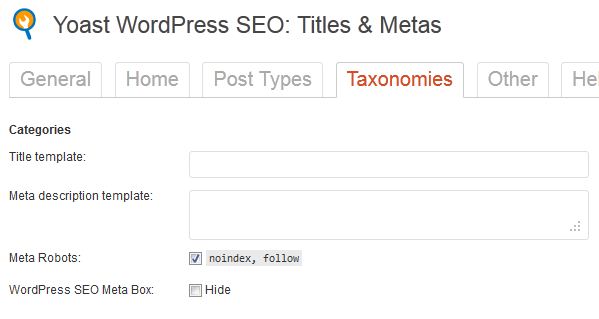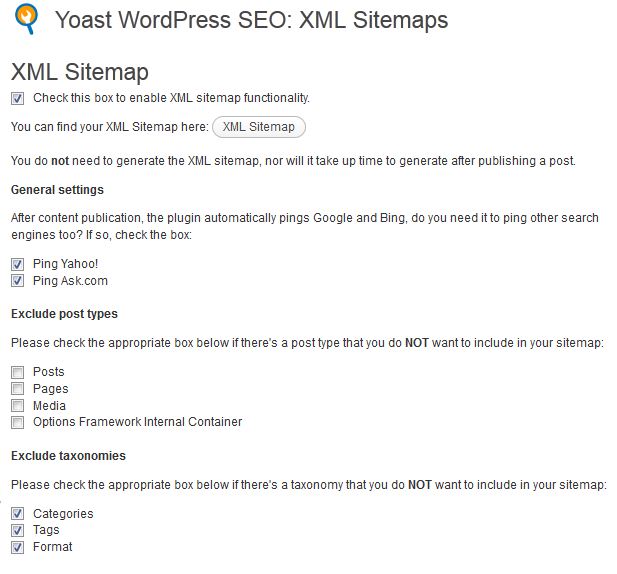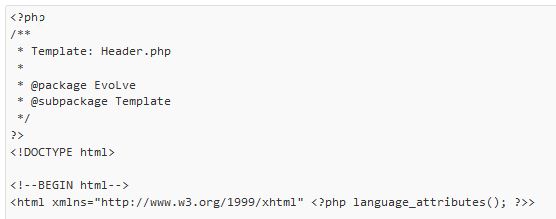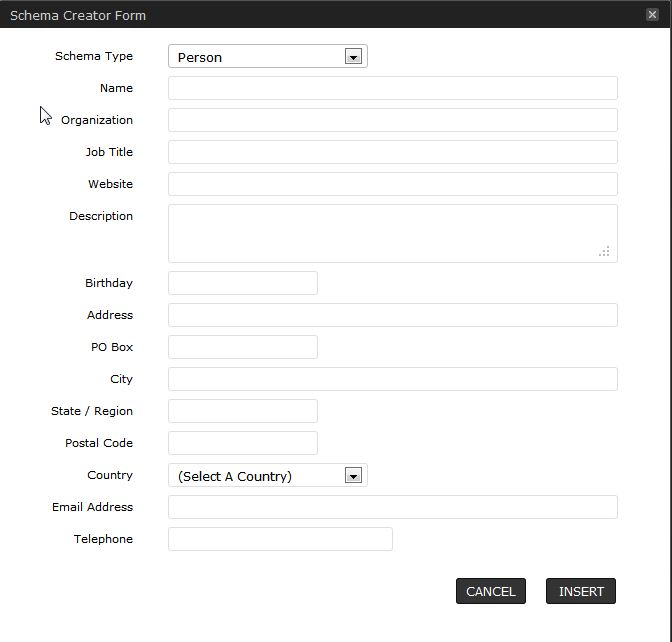Tag Archives: Katonah NY Realtor
Housing Recovery is Real but Risks Remain | Katonah NY Real Estate
The U.S. housing recovery is real and underway. The end-of-year numbers are in for the primary housing measures. Existing home sales were up 9 percent in 2012 from 2011; new home sales were up 20 percent in 2012 from a year earlier and housing starts were up 27 percent this past year compared to the previous year.
Granted, these advances were based off historically low bases but we will take what we can get after six years mired in a housing recession. Perhaps a more telling statistic for the nation’s housing outlook is appreciating home values. Over the past six months, home prices increased between 4 and 9 percent, according to the major home price indexes. Lean housing inventories (both existing and new home supply are below 5 months) combined with fewer distressed homes for sale, portend favorably for future gains in home values.
The drivers of housing demand are in place for a sustained recovery: high affordability; job growth (albeit modest); strong investor demand; rising buyer confidence; lean home inventories; home price appreciation; and fewer distressed homes for sale. However, there are two factors that stand out that could influence the housing outlook.
Foreclosure Situation
Overall, foreclosure filings and inventories are declining, an indication that most states have worked through the bulk of their foreclosure problems, reducing downward pressure on home values. Foreclosures are down 18 percent year over year. However, an agreement between the Federal Reserve/Comptroller of the Currency and the ten largest mortgage servicers in the nation is expected to generate a mini-wave of foreclosures in the near term, exerting some downward pressure on home prices. The agreement marks the end of the robo signing scandal and permits servicers to halt the burdensome review process on mortgages that were foreclosed in the 2009 to 2010 period in exchange for $8.5 billion to eligible homeowners, including a $3.3 billion payout to borrowers and the remaining funds going to loan assistance
Foreclosure Process Hammers Florida’s Housing Market | Katonah NY Real Estate
A sign hangs outside a house in Miami in 2010. Currently, Florida’s foreclosure legal process can take a couple of years, which critics say is hurting the housing market.
Joe Raedle/Getty Images
A sign hangs outside a house in Miami in 2010. Currently, Florida’s foreclosure legal process can take a couple of years, which critics say is hurting the housing market.
Joe Raedle/Getty Images
A decade ago, speculators in Florida were pumping up a huge housing bubble.
“You couldn’t go wrong,” Tampa real estate attorney Charlie Hounchell says. In that overheated period from 2001 to 2006, “you could buy a house and make $100,000 a year later by selling it,” he says.
But the party ended in 2007 and the hangover persists. The state now has the highest foreclosure rate in the country, beating out Nevada for the first time in five years.
Experts say the legal process in Florida is the key reason for the sluggish pace of foreclosures there.
A Three-Minute Trial
The busy lobby inside the Hillsborough County courthouse in Tampa is noisy with defendants, lawyers, even crying babies. But inside a fourth-floor courtroom, it’s all business — as focused and streamlined as possible.
“I enter a final judgment of foreclosure for the total sum of $194,256.49 with a public sale date of March 11 at 10 a.m.,” Judge Judy Pittman Biebel says as she delivers a verdict. The entire foreclosure trial took about three minutes.
Biebel is a retired judge from Panama City, Fla., who travels to Tampa to sit on the bench for a week at a time — specifically to handle foreclosure cases.
“We work cheap,” she says with a laugh, “and we’re paid $350 a day.”
The state funds these additional judges to help deal with the enormous backlog of foreclosures. One in every 32 Florida households received a notice of default, auction or repossession in 2012 — more than double the national average.
Florida is getting it from both ends: Foreclosures are still coming in at a high rate, and they’re very slow going out. In fact, it’s taking nearly 2 1/2 years to get through the judicial process.
Biebel says the courts stay busy.
“Today was all nonjury trials,” she says. “Yesterday was various motions all day long. So we sit and do this all day long. “
And this speedy trial — over in just minutes — stands in stark contrast to the foreclosure process, which typically starts years earlier.
Real estate agents say the backlog of distressed homes makes it tough for the Florida housing market to recuperate. Those homes depress prices and create uncertainty in neighborhoods.
Florida’s ‘Broke’ Legal Process
Why does it take so long to get these foreclosed houses back on the market?
Analysts say the cumbersome legal process in Florida sets the state apart from other hard-hit states.
But judges say they’re not at fault. They say banks need to get a handle on finding promissory notes that have been shipped all over the country and on organizing their paperwork.
Others, like Sharmon Lenth, blame foreclosure defense lawyers. She’s the president of a small credit union that has been trying to foreclose on a house for years. She watched the proceedings from the courtroom gallery.
“These people, they’ve lived in this house over 2 1/2 years for absolutely … for nothing,” she says.
Lenth doesn’t want the judge to give the homeowners any more time.
“We worked with these folks,” she says. “We worked with them starting back in 2008. We combined things for them so we lowered their payments. Eight months later we worked with them again, to help them to get through some tough times. They made 14 payments on that, they defaulted on it and hired one of these attorney groups.”
The homeowners didn’t attend the trial, but their attorney, Satyen Gandhi, was at court. Gandhi said the loan modification expired after two years, leaving his client unable to make payments again.
Biebel ended up giving the borrowers more than 60 days to leave the house.
Lenth was disappointed. She says the members of her credit union needed to acquire that house and have it sold.
“The whole process is just broke. It’s just broke,” she says.
No Quick Solution Seen
Lenth says unscrupulous foreclosure attorneys are using delaying tactics to tie up the process. But even with the complaints about the process, it doesn’t appear that it will change anytime soon.
Nor should it, says Hounchell, the real estate attorney. He says the judicial review is an important protection for homeowners — a protection that they don’t get in most other states.
“But comparing one state to another is not necessarily fair, because Nevada is a nonjudicial foreclosure state,” he explains. “In Florida, the consumer has much more opportunity to remedy their default situation.”
They’re going to need those opportunities, because experts say the foreclosure crisis won’t end anytime soon.
3 Things Home Buyers Should Know About Today’s Sellers | Katonah NY Homes
Florida officials tackle foreclosure crisis | Katonah Real Estate
It was deemed America’s new foreclosure capital in 2012, with a 53% increase in filings last year, but Florida officials wanted a change. So they took the bull by the horns.
Attorney General Pam Bondi, joined by the state’s Senate President Don Gaetz and House Speaker Will Weatherford, addressed a newly approved $60 million program for housing aid in Florida on Thursday.
The program, part of the multibillion-dollar national settlement that included cash payments to states, will fund homebuyer assistance, legal aid and foreclosure prevention.
“This is real relief for real people,” Bondi noted.
Florida’s total monetary benefits are over $8 billion in the settlement, with the $60 million in housing aid just one part of a larger settlement.
Broken down, the $60 million program includes $35 million for down payment assistance, $10 million for foreclosure counseling, $5 million for foreclosure backlog reduction, $5 million for legal aid and another $5 million for attorney general’s legal fees.
“We all know, living in Florida, we have been affected by the mortgage foreclosure crisis that has been in the state of Florida more so than just about any other state in America,” said Weatherford. “This has been a long time coming, to know that $8 billion of resources has come to our state to aid people in need, but more specifically the $60 million that we’ve agreed to in the last week that’s going to help people with counseling, with down payment assistance, etc.”
Florida homeowners received billions of dollars worth of direct mortgage assistance from banks. “Almost 50,000 Floridians have received at least $73,000,” said Bondi. “That’s a lot of money.”
Bondi said $200 million is still going through the legislative process and remains to be spent.
Bondi also took the opportunity to address those who faced wrongful foreclosure, but have yet to file a claim. This group respresents approximately 49% of the harmed homeowners in the state.
The Attorney General urged those who have yet to make their claims to follow up by visiting myfloridalegal.com to redeem the money they are owe.
Eurozone Flops Drag Down Global House Prices | Katonah Realtor
The flagging Eurozone is blamed for weighing down global house prices.
By the end of September 2012, house prices were only 5.2% above the lows recorded in the wake of the global downturn in 2009, says global real estate firm Knight Frank.
They say that stalling house prices in the Eurozone’s 17 countries are dragging down the global average and as a result, prices fell by 1.8% in the year to September 2012.
The figures hide some poor performing economies – sluggish Ireland was pushed out of bottom place with a 9.6% fall in property values by Greece’s even worse 11.7% drop in prices.
British property prices continue to struggle, recording a 1.6% drop in the third quarter.
Hardest hit
A Knight Frank spokesman said: “Eurozone house prices continue to be the hardest hit and, as a result, European countries now make up the bottom 12 places of our index.
“It’s no coincidence they are there since the economy is in a second recession in three years.
“The Eurozone isn’t alone – many of the world’s housing markets are in need of an effective stimulus to help them from flagging.”
Other poor European performers include Spain, with a 9.3% price reduction, Portugal with a 3.5% decrease and prices in Italy slumped 3.5%.
The figures, which are based on government or central bank data, also reveal which countries experienced a boom in their house prices.
South America experienced 9.8% growth – led by Brazil, where prices surged by 15.2% in 12 months.
Asia Pacific house prices chalked up a 4.2% increase, seeing Hong Kong perform best with a 14.2% increase.
Price stagnation
Turkey climbed to third place with an 11.5% growth in house prices.
The report also highlights prices in the US have picked up, which will have a positive effect on global property markets. Prices rose 3.6% year on year..
US vacancy rates are also at their lowest since 2005 and housing starts are up 49% on 2011.
“Prices this year in Europe will be affected by lack of confidence, property affordability and the levels of debt. In the US, strict lending criteria is in place, but we are also seeing early signs of economic growth,” said the report.
“In Asia Pacific, there are various regulatory measures in place to keep house price increases in check.
“The picture is not uplifting and the current stagnation looks set to continue well into 2013.”
Facebook Graph Search – What It Means for Businesses | Katonah Realtor
Florida foreclosures hit highest level in 2012, defy housing rebound | Katonah NY Real Estate
Guide to Bringing Your WordPress Blog Up to Today’s Google Algorithm Standards | Katonah Realtor
Keeping up with Google’s ever-changing algorithm updates on WordPress blogs requires constant monitoring and adjustments, which many webmasters fail to keep up with. Following the Penguin algorithm update, millions of bloggers experienced a halt or decrease in traffic.
Although keeping up with industry trends does require frequent updates to continue performing well in search, most tasks are not time consuming at all. This guide will help you understand recent changes to Google’s algorithm and how to update your WordPress blog to follow the new industry standards.The Penguin and Panda Revolution
The Penguin and Panda algorithm updates targeted low-quality websites full of duplicate content, spammy linking, and poor user experience. WordPress is a wonderful content management system and blogging platform out-of-the-box, but it does create massive amounts of duplicate content.
The days of large scale link exchanges and linking to unrelated, low-quality websites were abruptly ended by the Panda update. In previous years, many bloggers would create low-quality sites with poor internal linking structure, few quality pages and banner ads taking up majority of the pages, which was halted by Penguin. Many bloggers, especially personal bloggers, were left wondering what to do and how to monetize their blogs.
Link Building for Blogs in the Post-Penguin World
Sure, the days of quick and easy links are over, but this doesn’t mean there is any less value to link building. In fact, high-quality, relevant links are valued more than ever. Before building new links, it is imperative to go back and fix your current link profile. Start out by pulling a backlink report of your website. Sift through each of the results, identifying any low-quality or irrelevant links. Contact each webmaster to remove the links. If you cannot find contact information or the webmaster refuses to remove the links, consider using Google’s new disavow links tool.
Now that you have removed all low-quality links pointing to your website, take a look at who you are linking to. Many personal bloggers sell text link ads and sponsored posts for extra income. These days are nearing their demise. Your PageRank is not only determined by inbound links, but also outbound links.
Unless implicitly stated by the advertiser, I would highly recommend adding the NoFollow attribute to any paid links on your website. Let’s say you own a travel blog, and a travel company purchased a sponsored post from you with the anchor text “cheap holiday travel packages.” You would change the markup for the link to look like this:
cheap holiday travel packagesThis will remove any value passed on from your website to the advertiser, and will help your website conform to Google’s webmaster quality guidelines for link schemes.
Fear not, your blog can still be monetized. Consider signing up for Google’s display advertising network: AdSense. Offering display advertising options is the safest way to continue monetizing blogs. After all, Google wouldn’t offer it if it would hurt websites. Be careful not to overdo it with the display ads.
Websites with 50 percent or more advertisement saturation will be penalized, so placement and ad quality will be key to allowing effective ads that will make you money. Consider looking into conversion optimization and a/b testing to find which ads perform best in different spots on your website, and be sure to filter the types of ads that can be displayed so they are relevant to your audience. YouTube videos can also be monetized, so consider starting a YouTube channel and incorporate video into your blog.
Although most link building practices have been blacklisted by Google, there are still many ways to build links to blogs. Instead of exchanging links on lengthy links pages, consider exchanging guest posts with highly relevant blogs. Write high-quality, enticing content that other websites will want to reference with links. Sign up for Google Plus and set up Authorship.
Look for websites containing recommended blog lists relevant to yours, and inquire about getting listed. Review products within your industry, and use social media to let those companies know you reviewed their products. They may include your review in their list of testimonials. Attend or exhibit at industry events which list attendees on the event’s website with links. Become a thought leader in your niche by creating and promoting linkable assets like white papers, guides, videos, ebooks, and best practices.
Setting up Your Blog for SEO
Optimizing WordPress blogs requires a few plugins and configurations to meet today’s industry standards. Start off by downloading and installing a plugin called WordPress SEO. This is the best SEO plugin available for WordPress, and it has an import feature to import any settings from other SEO plugins.
Download and activate another plugin called W3 Total Cache. This is the best caching plugin available, and works in unison with WordPress SEO. W3 Total Cache will help decrease page loading speeds by creating a cache of each page. Any time you mark a comment as spam, save a draft of a post, or click off the page editor, WP creates a duplicate copy of those pages.
Using the WP-Optimize plugin will purge all those unnecessary copies, which will save server space and speed up your website. WP-PageNavi is another must-have plugin for optimizing your pagination by adding the rel=prev and rel=next attributes. This will help your website be indexed more efficiently and increase crawl depth.
Once all those plugins are installed and activated, you will need to configure them. Use the WordPress SEO plugin to set up Google and Bing Webmaster Tools from the “Dashboard” menu on the plugin settings. Next, go to the Titles &Metas menu. On the General tab, check the box to force rewrite of titles if your custom title tags are not showing up. Check the box to Noindex subpages of archives. Check all four boxes to clean up the head by hiding RSD links, WLW manifest links, shortlinks, and RSS links.
On the Home tab, write a custom title tag and meta description for your homepage. You will also want to go through all pages and posts on your site and write custom titles and descriptions for each using the post editor. Enter in the URL of your blog’s G+ brand page in the Google Publisher Page field. This will set up the rel=publisher attribute for your homepage and connect your blog to your G+ page.
Once all those options are set up, go to the Taxonomies tab. WordPress creates massive amounts of duplicate content through taxonomies. Every time a category, tag, date, or author archive page is indexed, it creates a duplicate copy of each of those posts.
Check the box to noindex, follow the categories, tags, and format. Go to the Other tab and noindex, follow the author archives and date archives. Don’t worry about crawl depth from doing this. As long as you have optimized pagination set up through the WP-PageNavi plugin, your website will still be crawled effectively. I recently ran an experiment on noindexing taxonomies in WordPress to test this theory out.
Next, go to the XML Sitemaps menu in the WordPress SEO plugin. Check the box to enable XML sitemap functionality, and submit your sitemaps in Google and Bing Webmaster tools. Check the boxes to ping Yahoo! and Ask.com. Check the box to exclude taxonomies for categories, tags, and format.
Now go to the Permalinks menu and check the boxes to strip category bases and remove ?replytocom variables. You will also want to go to the WordPresspermalink settings and strip categories and datestamps out as well. On the Internal Links menu, check to enable breadcrumbs and implement breadcrumbs on your posts. A snippet of code will be provided in the plugin.
Setting up G+ Authorship
Setting up Google Plus authorship is very quick and easy on WordPress sites. Download and install a plugin called Google Author Link. Under the settings menu for the Google Author Link plugin, select an author for the homepage of your website. Now go to the Users menu in the WP dashboard and edit each user’s profile. Add in the URL to each author’s G+ profile. Next, ask each author to add a URL to your website on the “Contributor To” section of their G+ profile. Authorship is now set up on your blog.
Setting up Microdata
Microdata is still a relatively new concept, first introduced with HTML5. Schema.org is a joint project by Google, Yahoo and Bing to help webmasters mark up their websites so search engines can better understand their content. Bing and Yahoo give a boost in rankings just for setting it up while Google changes the appearance of your listings in search engine result pages to increase clickability.
Before setting up microdata, you will need to change the doctype of your website to the HTML5 format. To do this, go to Appearance>Editor. Select the header.php file. At the very top of the header.php file, you will see a doctype. If it is not already in HTML5 format, change the doctype to <pre><code><!DOCTYPE html></code></pre>. After updating the file, check your website to make sure this did not cause any compatibility issues.
Now that your website is HTML5 compatible, you will need to download and install a plugin called Schema Creator by Raven. Once activated, the plugin will automatically add schema.org microdata throughout your website.
Setting up microdata is as simple as that. If you would like to add in more microdata, go to your post editor or page editor, and you will notice a small icon with the letters “SC” in it at the top of the editor. This tool will allow you to add in microdata for people, products, events, organizations, movies, books, and reviews. It will create a short code and place it within the page for you.
A Few More Quick Tips
Now that your website conforms to today’s Google algorithm standards, there are a few other simple maintenance activities to keep in mind:
Always update your version of WordPress and all plugins as soon as updates are available. If you fail to keep up with updating plugins and versions, you may run into compatibility issues later down the road that will break your website.
Also, make an effort to publish new content at least once per month. Google loves fresh content, and favors websites that are updated frequently. If you get lazy about posting regularly, your traffic and rankings will suffer.
One final piece of advice is to monitor your analytics and webmaster tool accounts at least once per month. This will help you monitor technical issues that may arise as well as traffic drops. If you notice any abnormalities or receive warning messages in webmaster tools, act on these issues in a timely fashion.
3 Core Link Baiting Strategies for 2013 | Katonah NY Real Estate
The search engines are always changing, but link baiting strategies never die. Here are the three core elements of an effective link bait campaign, which will only be more vital in the year ahead:
1. Understand Shareability
A link is, fundamentally, really just a social share from somebody who happens to run a website. While the platform (HTML) is different, the psychological forces in play are the same. Content that goes viral on social networks will tend to attract links as well.
And, if you pay attention to social networks, you’ll notice that there are definite patterns. Most viral content has at least one of the following attributes:
It’s opinionated
The popularity of conspiracy theories on the Internet is perhaps one of the best examples of how bold opinions attract attention and propagate rapidly. A strong stance can alienate you from a large portion of your potential audience, but it can also expand your existing reach and strengthen your following. It’s probably best to stick to values you actually believe in, of course, to avoid a PR disaster at some point down the road.
It’s funny
The humor site Cracked currently has over 2.3 million Facebook likes and a Domain Authority of 88. They have accomplished this simply by collecting interesting facts and making them hilarious.
It’s insider information
The Wall Street Journal linked to WordStream, an online ad-consulting firm, because they published their own proprietary data about Google. The original source of new information tends to attract more links than the site that re-purposes it, unless they are extremely good at re-purposing content, or already have a larger following.
It’s cute
Cats rule the internet, and according to this article on the science of Internet cats, this is largely because they’re cute and vulnerable. Cute pictures and videos of babies and dogs also abound on the Web. There’s something about cuteness that demands to be shared.
It’s bizarre and quirky
Gawker hired Neetzan Zimmerman to produce the viral content that, as Gawker’s primary editor said, “for the sake of the other writers, [is] a necessary cog.” Zimmerman, who created The Daily What, says “When something goes viral, it tends to be something that is not expected to go viral.” Headlines like “This Pizza Has a Crust Made Out of Cheeseburgers,” and “Dead And Buried Hamster Emerges From Grave Alive And Well And Hungry For Brains,” tend to go viral more than what would traditionally be called “headline news.”
As Zimmerman said, A “taxidermied cat being that’s been turned into a helicopter—that’s clearly going to be successful, right? Because it’s got that element of shock, it’s got that element of a cat, you know, it’s basically just tailored to the Internet.”
It should hopefully be obvious from all of this that shareability is only one component of success. A piece of content that’s designed only to go viral is also likely to be poorly branded, irrelevant, and unlikely to lead to conversions down the road. For some more examples of successful link bait campaigns, we recommend taking a look at these 10 examples from WebPageFX.
2. Brainstorm Frequently
What should also be obvious from all of the above is that linkbait demands originality in some form. If the information isn’t new, the presentation must be. If the topic is “boring,” it takes creativity to transform it into something bizarre, quirky, or hilarious.
And while “cuteness” doesn’t necessarily demand creativity, if you keep pushing that button too often, it’s going to be seen as obvious pandering. Besides, it will still take creativity to transform a branding message into something even remotely cute.
Here are a few brainstorming tips to help you launch a successful link bait campaign:
Small groups are best
Put too many people in a brainstorming meeting and most of them won’t contribute. Groups of three to five are better for group brainstorming. In larger groups, people forget their ideas before they’re called on, and it’s difficult to get into a productive rhythm.
Individual brainstorming is a must
Some of the brainstorming should be done by individuals brainstorming alone. Many psychological experiments on the subject have demonstrated individual brainstorming sessions result in more ideas. Group brainstorming is a necessity in order make sure ideas are aligned with business goals and long-term strategy, but individual brainstorming is an important component that shouldn’t be ignored.
Try “brainwriting” instead of brainstorming
Studies have shown that this technique beats the pants off of traditional brainstorming. The process is simple. For three minutes, everybody writes at least three ideas. Then they pass their sheet to the left, read the previous ideas, and again record as many ideas as they can for three minutes. Keep doing this for either a set amount of time or until the group feels its ideas are exhausted.
Write it all down
Whether you’re brainstorming alone or in a group, write down every single idea. As we mentioned over at ProBlogger, psychology suggests that we reject creative ideas, even when we think we want them, and rationalize this by telling ourselves the idea wasn’t creative. Do not reject any idea that comes to mind. There’s plenty of time to weed through the list later.
Encourage constructive debate
This probably goes against everything you’ve ever heard about brainstorming, but the science is clear. Debate has a positive effect on brainstorming. While you should definitely record every single idea, debates paradoxically make people feel more liberated, and more comfortable sharing minority viewpoints. This allows more ideas to make their way into the discussion. Don’t get carried away with this, of course.
Mix ideas
If there is only one thing you should take away from all of this, it’s that mixing and matching ideas together is the best way to come up with new ideas. Don’t confine yourself entirely to your niche: Pull in ideas, concepts, facts, and stories from other disciplines in order to spice things up and draw analogies with your own subject matter.
Clearly, some of these tips contradict each other (debate vs. brainwriting vs. working alone, for example). Use more than one brainstorming method and measure the results. You may find that some techniques work better than others, or you may find that you need many different types of brainstorming in order to achieve the right variety of ideas.
3. Find Effective Sources of Information
Sometimes research comes before brainstorming, and sometimes it comes afterward. Both methods work fine, but result in different kinds of posts.
When the research comes first, it provides the raw material to combine and mash up into a unique idea. The advantage here is that you already have some idea of what facts and elements are going to go into the post. The disadvantage is that your ideas will be somewhat confined by the body of knowledge you’ve researched.
When the ideas come first, it forces you to stretch in your research and pull information from more unique sources. This can result in more unique ideas. The downside, however, is that you may discover the facts contradict your original idea, and that making your idea work would simply stretch things too far.
Hopefully, it’s clear that you need both kinds of posts, and that it’s actually a good idea to do some research both before and after brainstorming in most cases.
As we said before, “insider information” is far more likely to go viral than a redundant article. You can’t always be the next Bob Woodward, but you can get your information from places most people aren’t willing to look:
Google Scholar
Peer reviewed articles and scholarly papers aren’t easy to read, but that’s precisely what makes them so useful as a source of information. There’s a lot of information contained in these texts that has never made it’s way into the blogosphere, and most of it is only “boring” because it’s presented in a very technical way. Pull out the most surprising facts and the key takeaways and you’ve got yourself some “insider” information, of a sort.
Your Client
This isn’t the first time we’ve mentioned how useful your client can be as a source of information, and it won’t be the last. Odds are your client has a proprietary database of some kind. If you can, take advantage of it as a source of raw data.
Industry Experts (and People in General)
Get in touch with experts in your niche. The well known ones can help with exposure, and the less well known source can also offer some “from the front lines” information that you can’t find anywhere else. Watch the nightly news and notice how even an interview with a random person on the street can help a bit with credibility. There’s no reason to limit sources of information to your own research. Mine people for ideas, opinions, and information. Be a journalist.
The Library
Yes, it still exists. Believe it or not, this is also a great place to look if you want to find information that’s never made it’s way online. Yes, this still happens sometimes!
Anything That Could be Considered “Raw Data”
Whether it’s government statistics or an industry survey, raw data that’s never been turned into an article or blog post is one of your most useful “insider sources.”
Other Disciplines
We might be repeating ourselves a bit by saying this, but we can’t emphasize it enough. While the other research strategies demand looking through dense material, this one allows you to skim lighter blog posts and news articles and use them as insights for your own field. This makes the research part easier, but the creative part becomes more involved. This is the tradeoff.
Conclusion
To produce linkbait, you need to “get” the Internet, and understand why things go viral. It takes a comprehensive brainstorming strategy and a keen understanding of where to find original data in order to pull this off. The sweet spot between these three strategies is the launching pad for your most successful link bait campaign.
Did you learn anything new from this post, and do you have something to add? Let’s keep this going in the comments, and please pass this along if you liked our contribution. Thanks!
Image Credit: Shutterstock / Melpomene








